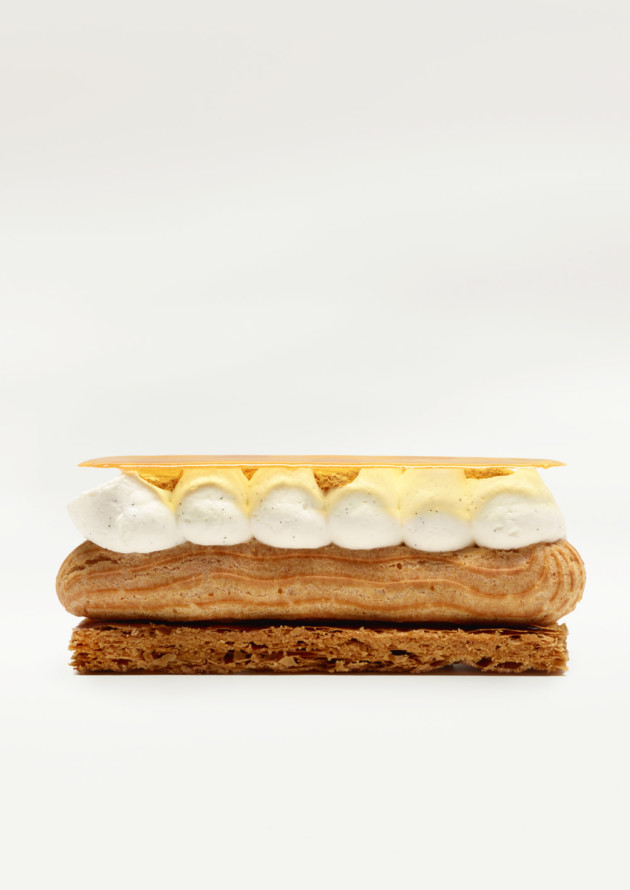FABIEN ROUILLARD Creativity and innovation director Known for gastronomic luxury and its grocery products, Fauchon has sixty points of sale throughout the world. It started in 1886 at the Place de la Madeleine, where it still stands today, and began making bread and pastries before the 20th century. It remained a family enterprise until the beginning of the 1950s, when its new owner joined with Air France to import exotic merchandise. It was at Fauchon that people first found kiwis or strawberries at Christmastime. Michel Ducros purchased the “Made in F” label in 2004. At the Madeleine store, his pastries offer the great French classics as well as creations with unique textures.
 France
France

It plays a very important role. We use it in half of our products, and it’s prioritised for its texturising properties. It brings unctuousity, airiness, and length on the palate to both ganaches and mousses. In pastry-making, it’s a crucial ingredient. I don’t know how anybody could do without it.
We put a little bit of heavy cream (30% of the total weight) into custards for flavour. It can also be used raw – to finish a custard, for example. In these instances, it’s used in cooking; it’s put in at the beginning of the cooking process and a tiny bit is added at the end as cream that has been whipped cold. We avoid boiling cream. I prefer to work with them at low temperatures. When it boils, it undergoes a phase change because the water is removed, and this changes its qualities and creates juices that are not very pleasant. Plain cream is a base. It’s added as cream, 30 to 50% of the composition, and we put things inside. On a ganache, for example, at least 50% of the final weight needs to be cream, then milk, the yolks and perhaps fruit purees. The whipped cream is added at the end, after having separately crafted a powerful and flavourful base. So it is just for texturising. The same for a fruit mousse base that will be used in cream desserts for the next collection. We use a lot of Chantilly, that has a vanilla flavour and is just placed on top of a pastry tart. As whipped cream (and therefore without sugar), in ganaches, jellies, or fruit compotes in small amounts. The same for the caramel éclair: it’s a creamy, aerated custard with a slightly whipped cream or sometimes a mascarpone that provides body. This cake holds for 24 hours without the need for gelatine.
For glazes, it’s indispensable. For example, it’s in the vanilla cacao butter glazing for the Snow Choc log (a marzipan biscuit cream pastry with a Menton lemon dough, mango puree, vanilla Chantilly). You add a very small quantity of agar and whipping cream for smoothness and shininess that retains the cold. 50% of this cake’s products are cream. Inside, there’s a beautiful texturised vanilla Chantilly that has an amazing hold and unctuosity on the spoon. A cake that is kept under a glaze of this type doesn’t move, and after 48 hours there are still no risks.
The Saint-Honoré. It presents a beautiful picture, 50% of the volume of the product is plain cream, visible, just piped on top, with a fine layer of caramel that covers it and that’s all.
A lot. I reserve passion for other pleasures.
The Palais de Samana, which was created a few years ago: a dark chocolate ganache palace, cooked in the oven, including the dish, and served hot because it can’t be turned out, with amarena on the side and a glass of wine.
FAUCHON
Paris 8e
 繁體中文
繁體中文  简体中文
简体中文  한국어
한국어  Français
Français 
